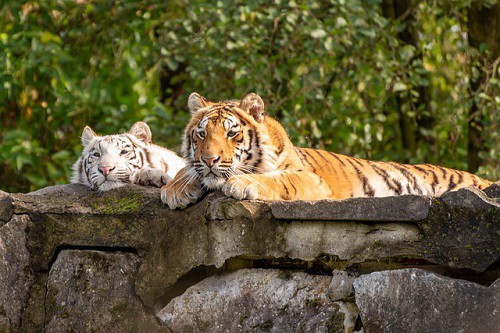Herbivores are the animals that rely on vegetation for food. In contrast, carnivores depend on other animals for their food needs. However, there are many other variations.
Herbivores vs Carnivores
| Sl.No | Characteristics | Herbivores | Carnivores |
| 1 | Nomenclature | The term ‘herbivores’ comes from the Latin word ‘herba’ means green plants. Herbivores are plant eaters | The term carnivores come from the Latin word ‘carni’ means flesh. Basically, carnivores are flesh-eating animals |
| 2 | Food | Herbivores are those animals whose primary food is green plants or vegetation. | Carnivores are those animals who consume the flesh of other animals as their food. |
| 3 | Teeth | Herbivores possess flat, spade- like canines and dull, short incisors that help them to grind plant leaves, seeds, and grains. | The herbivores have small mouth openings, which only resists these animals from eating plants and grains. The mouth opening is relatively smaller than the size of their skulls. |
| 4 | Mouth size | Excretion is through the kidneys and produces moderately concentrated urine. | The mouth opening in carnivores is larger and has a relatively bigger ratio than their skull size. |
| 5 | Chewing | Herbivores undergo extensive chewing to grind well the high fiber plant food. | Carnivores undergo less chewing and can swallow the food as a whole. |
| 6 | Salivary enzymes | The saliva of herbivores hosts carbohydrate digesting enzymes to break large lumps of rich carbohydrate food. | The saliva of carnivores does not have any digestive enzymes. |
| 7 | Digestive tract | The digestive tract of herbivores is longer than carnivores. This is because of the presence of a large amount of fiber in the diet, which is complex to digest. | The digestive tract of carnivores is typically short and simple due to the fact that meat is easily digested. |
| 8 | Stomach type | The stomach is either simple or has multiple chambers, e.g., ruminant animals. | The stomach is simple here |
| 9 | Stomach capacity | The stomach of herbivores comprises less than 30% of the total volume of the digestive tract. | The stomach of carnivores comprises 60%-70% of the total volume of the digestive tract. |
| 10 | Excretion | Excretion is through the kidneys but produces extensively concentrated urine. | The facial muscles in herbivores are well-developed. |
| 11 | Facial muscles | The jaws of herbivores are in expanded angle. | The facial muscles of carnivores are reduced to allow a larger mouth opening. |
| 12 | Jaw type | The jaw motion has no shear and has motion from side to side and front to back. | The carnivore’s jaws are angled but not expanded. |
| 13 | Jaw movements | The herbivores have small mouth openings, which only resist these animals from eating plants and grains. The mouth opening is relatively smaller than the size of their skulls. | The jaw motion has shear, and the motion is minimal. Only side-to-side motion is present. |
| 14 | Nails | Herbivores have flattened nails and blunt hooves | Carnivores have razor-sharp claws instead of hooves to tear apart their prey’s skin and hold it firmly. |
| 15 | Examples of animals | Deer, cows, goats, elephants, horses, giraffes, pandas, sheep, mules, etc. | Cats, lions, tigers, toads, snakes, crocodiles, dogs, hyenas, jackals, wolves, etc. |

